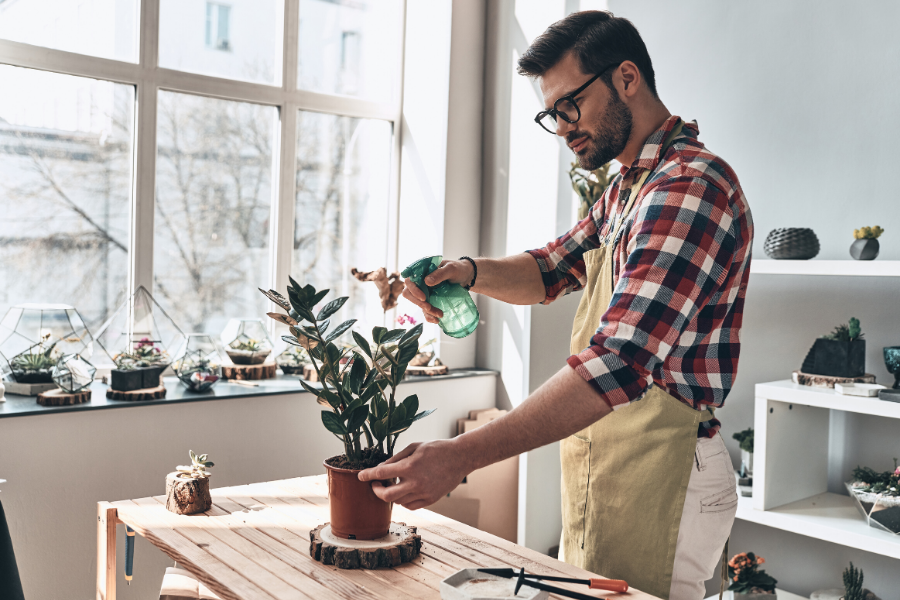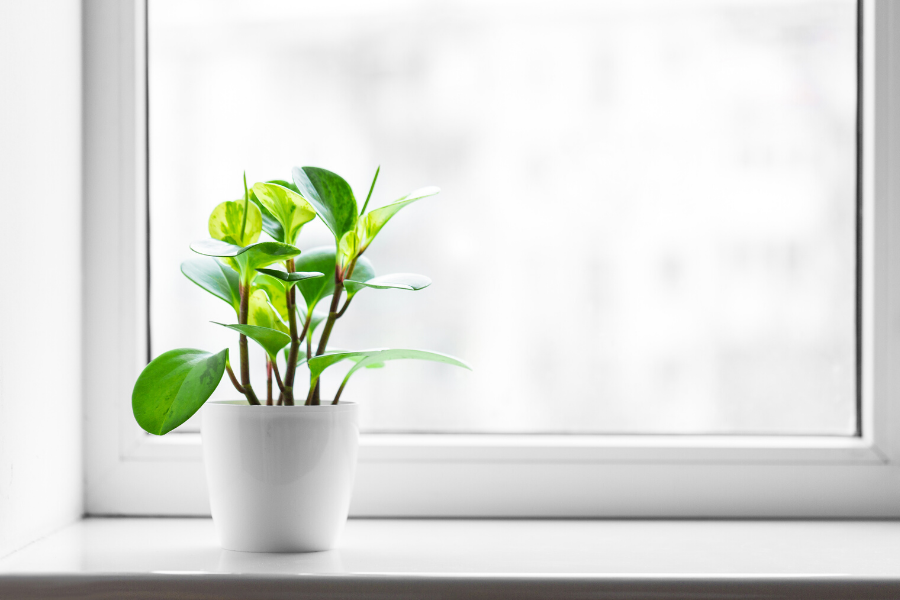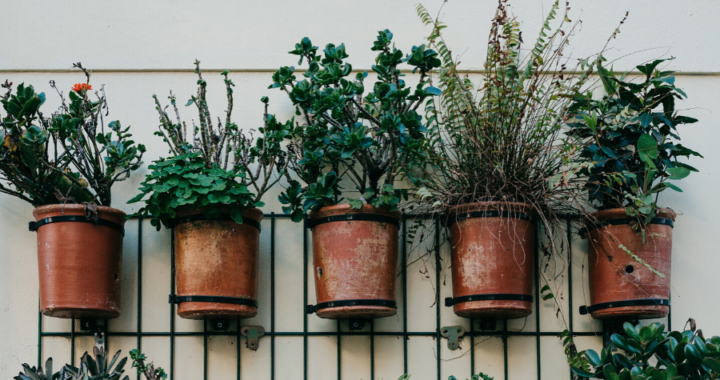Do your indoor plants look sad and listless? Has caring for them in winter always left you feeling frustrated? If so, we’re here to help. Read on to learn 8 tips to keep houseplants healthy during the coldest months of the year.
Whether your plants are inside all year or outdoor plants you bring in to over-winter, they will all need different care during winter than they do the rest of the year. The key to ensuring good plant health is to control the indoor environment to match the needs of your plants. Here are a few ways to do that.
1. Water Less Often

Winter is a slow growth season for plants, so houseplants will need less frequent watering. Depending on the species of the plant, that frequency will vary. For instance, a fern requires moist soil and should be watered more often than a cactus, which prefers drier soil. Most plants should be watered when the soil is almost dry. To test this, stick your finger into the soil. If it feels dry an inch or two below the surface, it’s time to water.
Remember: Houseplants need to be watered thoroughly. Water them until there is excess water freely draining from the bottom of the pot into the tray. Then drain the tray and replace it beneath the pot.
2. Increase Humidity
Houseplants generally like a higher level of humidity. Heating your home in winter causes the air to dry out significantly, so you will need to compensate for that by raising the humidity somehow. A few ways to do this are: running a humidifier, moving plants to a more humid room in the house (a bathroom or kitchen, for instance), or placing a tray of water near your plants.
Grouping plants close together can help as well. Plants naturally release water through their leaves, so placing them together allows neighboring plants to take advantage of that released water.
3. Avoid Fertilizer
In the spring and summer, plants are actively growing and will need to be fertilized every once in a while. However, since winter is the growing off-season for plants, they will need very little to no fertilizer. Skip the fertilizer and focus on other aspects of plant care for now.
4. Remove Dust from Leaves
Dust buildup on the leaves of your plants can prevent them from absorbing as much sunlight as they need, and potentially spur the development of disease. About once a month, spritz leaves with water and use a cloth to gently wipe off dust.
5. Watch for Pests
While you’re dusting, keep an eye out for pests. Look for pests in the soil or under the leaves of plants. If you suspect any, just add a small amount of soap to the water you’re spritzing with. Pests can spread to other plants quickly, so it’s best to treat them as soon as you notice them.
6. Don’t Repot
Repotting can be stressful for plants. Try to repot in the spring, summer, or fall whenever possible, when plants have more sunlight and humidity to help them adjust. In winter, plants are more dormant and can have a difficult time recovering.
7. Maintain Consistent Temperature
Most houseplants are at their best in temperatures between 65-75℉ (and no lower than 50℉ at night). To help maintain that consistent temperature, make sure to keep plants away from drafts as well as sources of heat like radiators and fireplaces. You may even want to move them away from windows on the most frigid winter nights.
8. Add Lighting

Sunlight is much less intense in the winter than it is the rest of the year, making it difficult for indoor plants to receive the light they need to maintain good health. One way to help plants get more light is to move them to sunnier spots in your home. However, in many cases that may not be enough. Consider adding additional light sources, such as fluorescent growth lights or incandescent lighting.
Incandescent lighting gives off more heat, so should be placed more than a foot above your plants. Fluorescent growth lights give off less heat and can be placed closer – about 4-6 inches above plants. If leaves begin to brown, the plant may be receiving too much light and heat. Simply adjust by moving the light farther away from the plant. Also, note that there are different colors of growth lights available. Each color has a different wavelength that affects plants differently, so make sure to choose the right ones for your needs.
Before you know it, spring will be here again and the McDonough crew will be ready to help you with your outdoor landscaping or living space. Until then, following these 8 steps will help keep your plants healthy and vibrant all winter. Happy growing!
